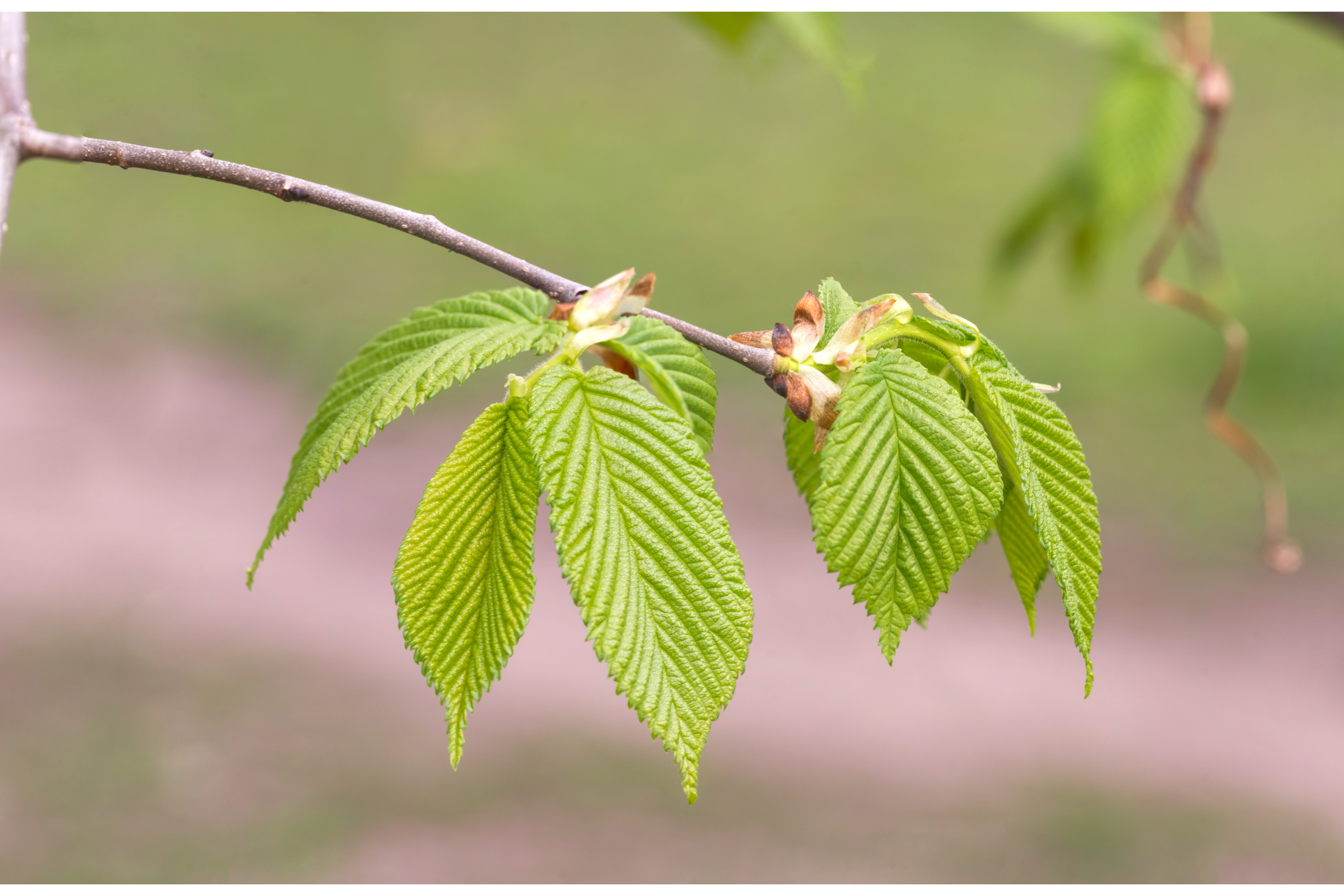Common hornbeam
(Carpinus betulus)

Description
Carpinus betulus, the European or common hornbeam, is a species of tree in the birch family Betulaceae, native to Western Asia and central, eastern, and southern Europe, including southern England. It requires a warm climate for good growth, and occurs only at elevations up to 1,000 metres (3,281 ft). It grows in mixed stands with oak, and in some areas beech, and is also a common tree in scree forests. Hornbeam was also known as 'Yoke Elm'. It is a deciduous small to medium-size tree reaching heights of 15–25 metres (49–82 ft), rarely 30 m (98 ft), and often has a fluted and crooked trunk. The bark is smooth and greenish-grey, even in old trees. The buds, unlike those of the beech, are 10 mm (0.39 in) long at the most, and pressed close to the twig. The leaves are alternate, 4–9 cm (1.6–3.5 in) long, with prominent veins giving a distinctive corrugated texture, and a serrated margin. It is monoecious, and the wind-pollinated male and female catkins appear in early summer after the leaves. The fruit is a small 7–8 mm (0.28–0.31 in) long nut, partially surrounded by a three-pointed leafy involucre 3–4 cm (1.2–1.6 in) long; it matures in autumn. The wood is heavy and hard, and is used for tools and building constructions. It also burns hot and slowly, making it very suitable for firewood. This was the reason for lopping and hence indirectly the saving of Epping Forest, where the hornbeam was a favoured pollarding tree. Hornbeam was frequently coppiced and pollarded in the past in England. It is still infrequently managed using these traditional methods, but mainly for non-commercial conservation purposes. As a woodland tree traditionally managed in this way, it is particularly frequent in the ancient woodlands of south Essex, Hertfordshire and north Kent where it typically occupies more than half of most ancient woods and wood pastures. Because it stands up well to cutting back and has dense foliage, it has been much used in landscape gardening, mainly as tall hedges and for topiary. It was the classic tree used in French formal gardens for hedges in bosquets, as in the Gardens of Versailles, and in their English equivalent, the garden wilderness. In England, trees appear to prefer soils with a pH from 3.6 to 4.6 but tolerate up to 7.6. They are found on soils with moderate clay content and avoid soils with particularly high or low clay content.
Taxonomic tree:







